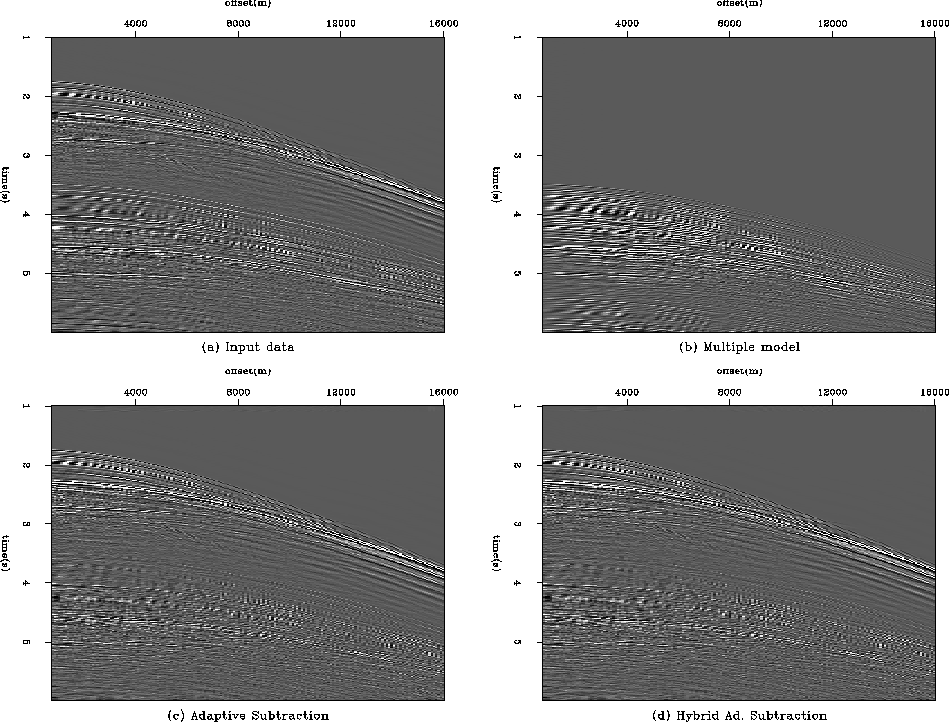 |
Figure 9 (a) A shot gather from a Gulf of Mexico 2-D line. (b) The corresponding multiple model. (c) Estimated primaries with the standard approach. (d) Estimated primaries with the hybrid approach. Both estimated signal are similar.
![[*]](http://sepwww.stanford.edu/latex2html/movie.gif)
In the following example, I show that when the signal/noise ratio is low, the hybrid subtraction is equivalent to the standard approach. In short if the signal level is well below the noise level, then the hybrid adaptive subtraction is equivalent to the standard approach.
To illustrate this last point I extracted one shot gather (Figure 9a) from a Gulf of Mexico 2-D line and estimated the corresponding multiple model (Figure 9b) with the Delft approach Verschuur et al. (1992). The first surface-related multiples appears at 3.5 seconds within an area where the signal is very weak. Consequently, Figures 9c and 9d which have been processed with the standard and hybrid approach respectively, are identical.
We can recognize in Figure 9 some well-known weaknesses of the adaptive subtraction approach at far offset where the multiples are not well attenuated. Guitton et al. (2001) obtain better results with a pattern-based approach.
 |
![[*]](http://sepwww.stanford.edu/latex2html/movie.gif)